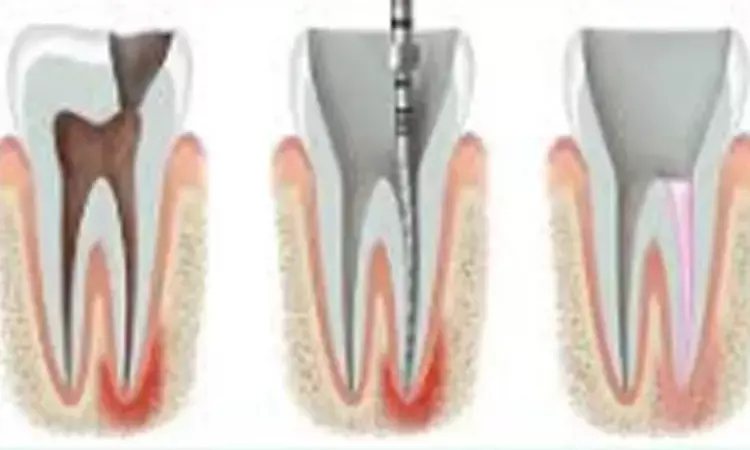- Home
- Medical news & Guidelines
- Anesthesiology
- Cardiology and CTVS
- Critical Care
- Dentistry
- Dermatology
- Diabetes and Endocrinology
- ENT
- Gastroenterology
- Medicine
- Nephrology
- Neurology
- Obstretics-Gynaecology
- Oncology
- Ophthalmology
- Orthopaedics
- Pediatrics-Neonatology
- Psychiatry
- Pulmonology
- Radiology
- Surgery
- Urology
- Laboratory Medicine
- Diet
- Nursing
- Paramedical
- Physiotherapy
- Health news
- Fact Check
- Bone Health Fact Check
- Brain Health Fact Check
- Cancer Related Fact Check
- Child Care Fact Check
- Dental and oral health fact check
- Diabetes and metabolic health fact check
- Diet and Nutrition Fact Check
- Eye and ENT Care Fact Check
- Fitness fact check
- Gut health fact check
- Heart health fact check
- Kidney health fact check
- Medical education fact check
- Men's health fact check
- Respiratory fact check
- Skin and hair care fact check
- Vaccine and Immunization fact check
- Women's health fact check
- AYUSH
- State News
- Andaman and Nicobar Islands
- Andhra Pradesh
- Arunachal Pradesh
- Assam
- Bihar
- Chandigarh
- Chattisgarh
- Dadra and Nagar Haveli
- Daman and Diu
- Delhi
- Goa
- Gujarat
- Haryana
- Himachal Pradesh
- Jammu & Kashmir
- Jharkhand
- Karnataka
- Kerala
- Ladakh
- Lakshadweep
- Madhya Pradesh
- Maharashtra
- Manipur
- Meghalaya
- Mizoram
- Nagaland
- Odisha
- Puducherry
- Punjab
- Rajasthan
- Sikkim
- Tamil Nadu
- Telangana
- Tripura
- Uttar Pradesh
- Uttrakhand
- West Bengal
- Medical Education
- Industry
Motorized files overpower traditional K-files in pediatric root canal treatment: Study

It has been recently noted that motorized files extruded less debris and required less instrumentation time compared to traditional K-files, which could benefit paediatric patients with root canal treatment needs, as published in the Scientific Reports.
All endodontic instrumentation methods have a tendency to push debris through the apical foramen and into the periapical tissues. Such debris may consist of necrotic pulp tissue, dentin chips and bacteria. Extrusion of such debris may induce postoperative pain and inflammation and may inhibit periapical healing.
A growing body of literature has recognized the importance of reducing apically extruded debris. Estimating the root canal length just short of the apex, using an electronic apex locator, would also seem helpful in reducing the chance of extruding debris beyond the apex.
The extent of debris extrusion and the time required for instrumentation of the canals of primary teeth using motarized files have not been reported to date.
Therefore, Bhaggyashri A. Pawar and colleagues from the Department of Oral Health and Advanced Dentistry, Sir H. N. Reliance Foundation Hospital and Research Centre, Mumbai, Maharashtra, India aimed to measure and compare the amount of apically extruded debris using Kedo-S paediatric rotary and the new XP-endo Shaper files, both of which are operated by an endo-motor (motorized) and to compare both to traditional hand-operated K-files.
Measuring the time required to complete the bio-mechanical preparation by these three files was a second goal of the present study.
Forty-five extracted primary canines were randomly assigned to three instrumentation groups (n = 15): Hand K-files; and the motorized Kedo-S files and XP-endo Shaper files. The apically extruded debris produced during the procedure was collected and dried in pre-weighed Eppendorf tubes, and the mass of debris was calculated.
The time required for the endodontic procedure was also recorded. Analysis of variance (ANOVA) and Tukey's post hoc test were used with a significance level set at 5%.
The findings highlighted that –
a. XP-endo Shaper and Kedo-S files extruded significantly less debris compared with hand K-files with means of 0.84 ± 0.31 and 1.20 ± 0.67 mg respectively, compared to 2.13 ± 0.31 mg (p < 0.0001).
b. No significant difference was found between the two motorized files.
c. Less time was required to complete the procedure with the XP-endo Shaper compared to the hand K-files (p < 0.0001) and Kedo-S files (p < 0.0001).
Hence, the authors concluded that "motorized files extruded less debris and required less instrumentation time compared to traditional K-files, which could benefit paediatric patients with root canal treatment needs."
Dr. Nandita Mohan is a practicing pediatric dentist with more than 5 years of clinical work experience. Along with this, she is equally interested in keeping herself up to date about the latest developments in the field of medicine and dentistry which is the driving force for her to be in association with Medical Dialogues. She also has her name attached with many publications; both national and international. She has pursued her BDS from Rajiv Gandhi University of Health Sciences, Bangalore and later went to enter her dream specialty (MDS) in the Department of Pedodontics and Preventive Dentistry from Pt. B.D. Sharma University of Health Sciences. Through all the years of experience, her core interest in learning something new has never stopped. She can be contacted at editorial@medicaldialogues.in. Contact no. 011-43720751
Dr Kamal Kant Kohli-MBBS, DTCD- a chest specialist with more than 30 years of practice and a flair for writing clinical articles, Dr Kamal Kant Kohli joined Medical Dialogues as a Chief Editor of Medical News. Besides writing articles, as an editor, he proofreads and verifies all the medical content published on Medical Dialogues including those coming from journals, studies,medical conferences,guidelines etc. Email: drkohli@medicaldialogues.in. Contact no. 011-43720751


